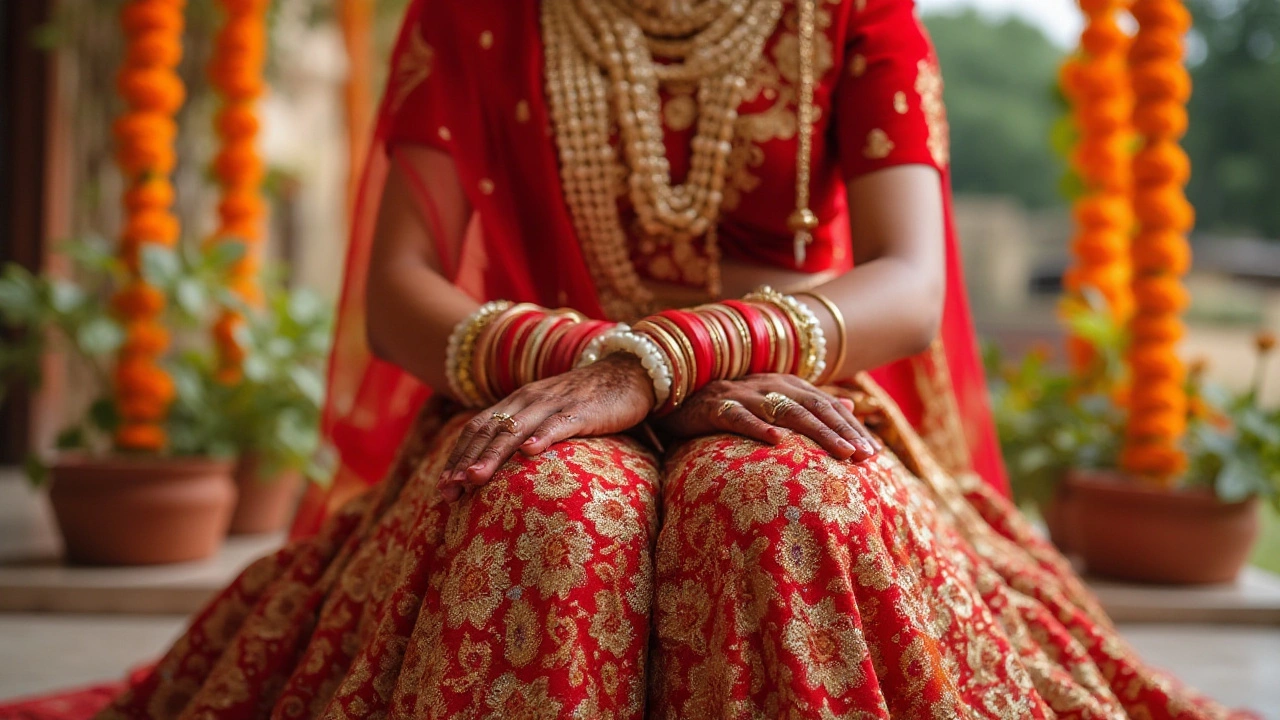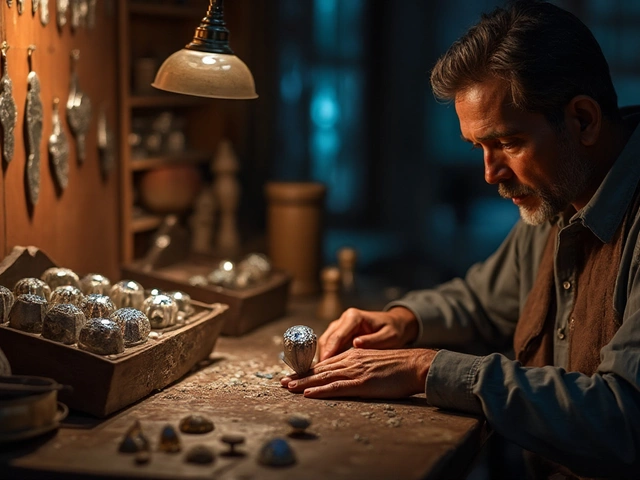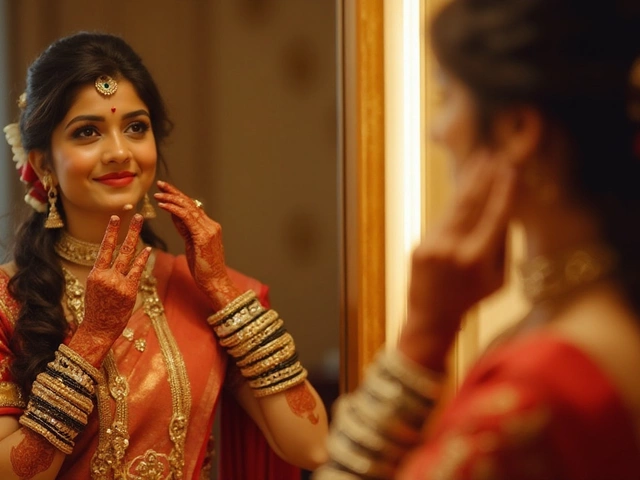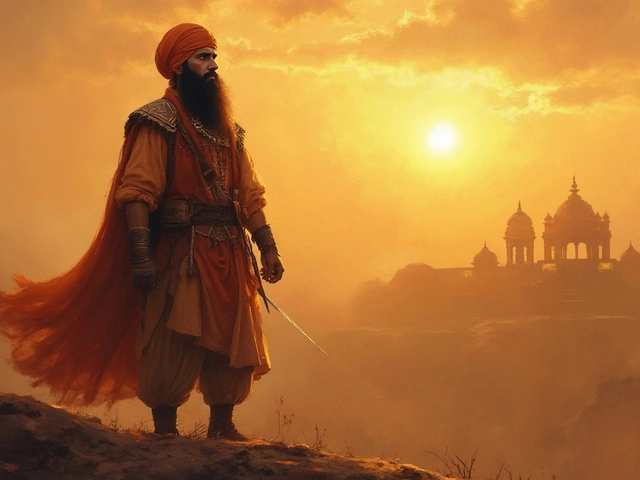Choora bangles, a vibrant array of red and white, hold a special place in the heart of Indian wedding traditions, especially among Punjabi communities. These bangles are not just ornaments but a representation of joy, love, and a prosperous union. The story that surrounds these bangles is as colorful as the bangles themselves.
The choora is adorned by a bride for a specific period, ranging from a few days to a year, after her wedding. This tradition, steeped in lore and cultural essence, marks a bride's status as newlywed. But what happens when it's time for the choora to come off? This intriguing process is filled with emotion and significance, symbolizing her journey into married life.
The act of removing the choora is more than just a personal decision; it involves family members and carries with it layers of tradition and respect. Often, it's the maternal or paternal aunt who has the honor of slipping the choora off the bride's wrists, a process that's shared in both solemnity and celebration.
In this article, we'll explore the cultural importance of choora, delve into the rituals around its removal, discover who traditionally takes on this role, and look at how these traditions are evolving in modern times, keeping up with the spirit of the times yet holding on to their roots.
- Cultural Significance of Choora
- Traditional Rituals Involving Choora
- Who Can Remove the Choora
- Modern Perspectives on the Choora Tradition
Cultural Significance of Choora
The choora bangles are more than just a splash of color on a bride's wrists; they are a deep-rooted symbol of marital happiness and prosperity in Indian wedding traditions, particularly within Punjabi communities. These bangles, usually red and ivory in color, are traditionally made of either ivory, plastic, or glass. Their vibrant hues are believed to bring good fortune and are seen as a representation of the joy and sanctity of a marital bond. The journey of wearing the choora begins on the morning of the wedding day, as part of an elaborate and joyful ceremony that involves close family members and friends. It is not just an accessory, but rather a public declaration of a woman's new status and the blessings showered on her to live a prosperous life.
The ceremony of wearing the choora, known as Choora Chatana, is performed by maternal uncles, who slip these bangles onto the bride's wrists amidst chanting and blessings. Each aspect of this ritual is imbued with significance, reflecting the community's values and the responsibilities she will carry as she transitions into her new life. The choora, worn for varying lengths of time, from a few weeks up to a year, remains a visual reminder of her newlywed status and her commitment to her new family. According to popular belief, the longer a bride wears her choora, the better she integrates and adapts to her marital home.
The history and cultural importance of the choora are profound. Some believe that its origins trace back centuries, with ancestral traditions that emphasized adornment and good luck. Many communities hold that the sound of the bangles wards off evil spirits, thus protecting the bride as she embarks on her life’s new chapter. A study examining traditional practices noted that the symbolism of the choora stands as a reminder of unity and the strength of family bonds. Although modern brides sometimes face the challenge of balancing tradition with contemporary preferences, the cultural resonance of these bangles ensures their continued prominence in wedding customs. As the popular saying goes:
"Choora holds the whispers of the past and the promise of the future."Such sentiments are echoed in both personal reflections and academic insights, pointing to the enduring legacy of these traditional bangles in Indian society.
Every time a bride adorns her choora bangles, she contributes to a living tradition that continues to evolve yet remains deeply anchored in its cultural roots. The choora not only enhances the bride's beauty but also serves as a shared link across generations. Young brides today may opt for variations in colors or materials to match their personal styles; however, the respectful homage paid to the traditional significance is unwavering. To fully appreciate the role of choora in Indian weddings, one must also embrace the historic journeys and stories intertwined with this beloved and symbolic custom.
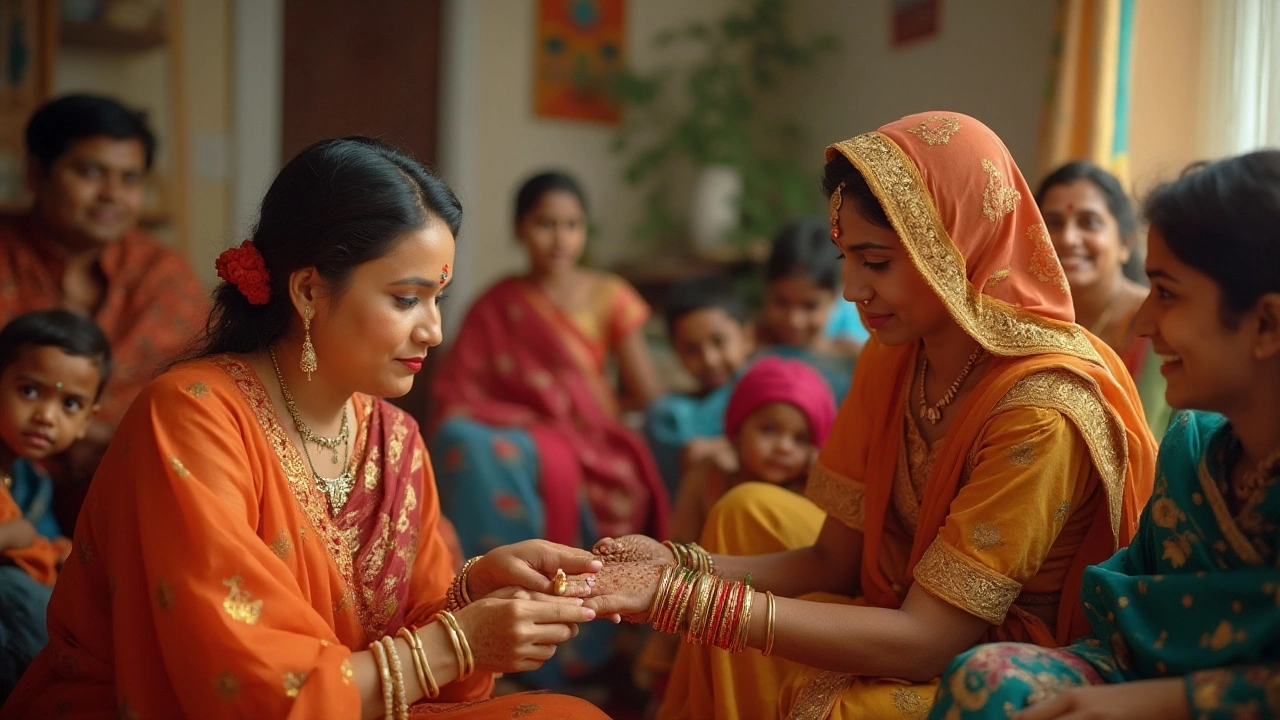
Traditional Rituals Involving Choora
The ritual of wearing the choora bangles is a beautiful tapestry woven through the history and culture of Punjabi wedding customs. This tradition stands out amidst various Indian ceremonies, primarily due to its striking appearance and deep-rooted symbolism. As the bride embarks on a new journey, these red and white bangles become a cherished emblem of her new status. Historically, the significance of the choora extends beyond the visual; it's a manifestation of blessings for a prosperous and happy married life.
The journey of the choora begins well before the wedding day. During an auspicious ceremony known as 'Chooda Chadana,' the bride's maternal uncle and aunt are the protagonists of this touching event. They present the choora bangles to the bride on the morn of the wedding day, signifying the familial ties and blessings she carries into matrimony. The choora is slipped onto her wrists amidst hymns, prayers, and often with eyes glistening with happy tears, ensuring that she is buoyed by positive energy and goodwill.
An elder from the bride’s maternal side typically officiates this ritual, ensuring that the family’s respect and tradition are woven into the act. The customary practice involves blessing the bangles with milk and rose petals, anointing them with purity and love. Once consecrated, the choora bangles are stacked onto the bride’s wrists by her 'mama' or maternal uncle. It is more than mere ornamentation; it is a protective talisman for her new journey.
"The choora is more than a symbol of marriage; it embodies history, heritage, and heartfelt wishes," shares cultural historian Kiranjit Kaur.
This captivating ritual does not end on the wedding day. Traditionally, the bride continues to wear these bangles for a specified duration, sometimes for several months, depending on regional customs and personal beliefs. During this period, the choora becomes a constant companion, strengthening the bond she shares with her new family and community. Many brides also incorporate religious practices or personal meditations with the choora bangles in mind, weaving spiritual growth alongside the physical presence of the bangles.
Mirroring its vibrant start, the choora's journey culminates in an equally symbolic ritual. When it's time for the choora to be removed, known as the 'choora ritual completion,' it is often accompanied by close family members, some rituals including a small homely celebration to honor the transition. This phase signifies the bride’s move towards more grounded responsibilities within married life, as she blossoms from the role of a new bride to that of a partner and possibly, caregiver.
Some contemporary families have adapted these rituals, both simplifying and altering them to better fit modern lifestyles. Yet, they continue to honor the essence of this tradition. Despite changes, the heart of the choora bangles remains reflective of resilience, unity, and the colorful amalgamation of past and present. Thus, while the rituals might evolve, the choora stands as a steadfast icon of cherished customs, painting vivid tapestries of celebration and belonging in the lives of those it adorns.
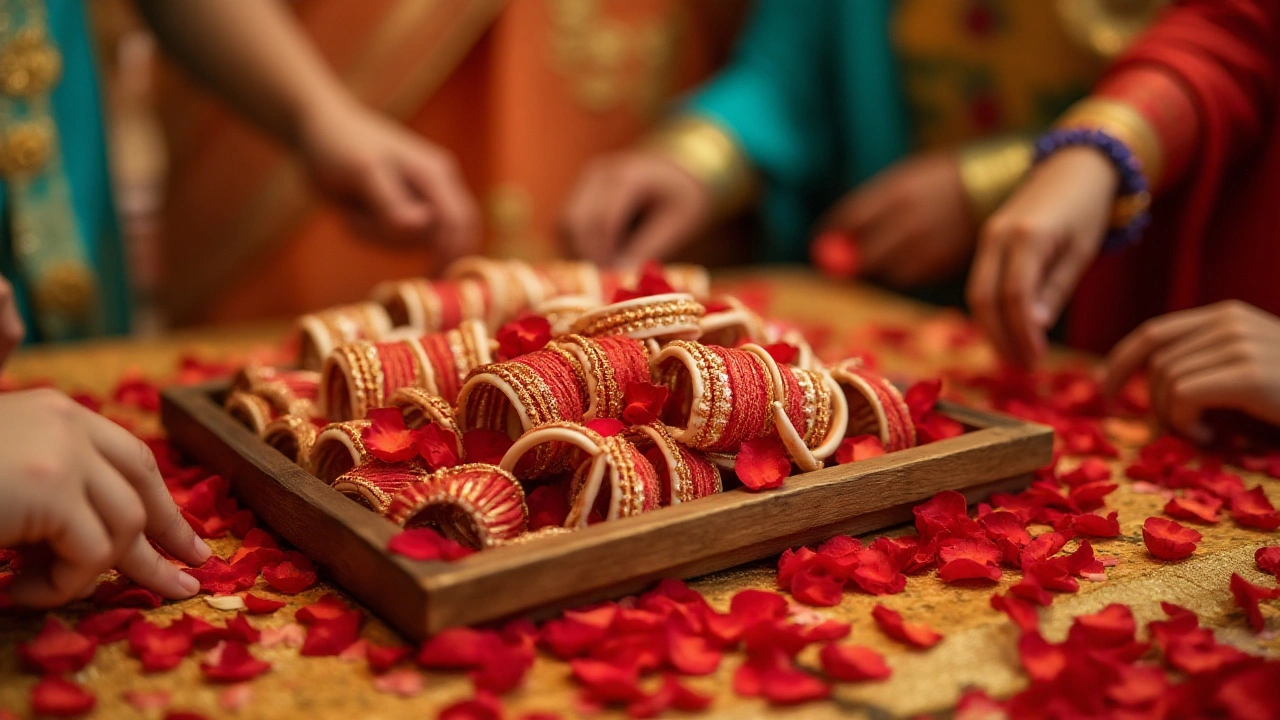
Who Can Remove the Choora
The act of taking off the choora bangles is a tradition that holds deep significance, not only for the bride but also for her family and the larger community. It is a ceremonial rite, marking a transition in the bride's life from being newlywed to settling into her role in her husband’s household. This task is often given to specific individuals who are deeply respected within the family circle, ensuring that the act carries the weight of tradition and blessing.
In many cultures, it is the bride's maternal or paternal aunt who performs this ritual. These women, usually who have been happily married themselves, bestow a sense of guidance and luck upon the bride. They symbolize the bridging of different life stages, having themselves gone through these experiences. The participation of these women also represents a continuum of generational wisdom, ensuring the bride is surrounded by women who care for and support her.
The timing of this removal is equally crucial. Traditionally, the removal of the choora happens during an auspicious time, determined by family elders or astrologers. It may coincide with other significant familial events or festivals, making it a dual celebration. This timing is meant to invoke positive energies and foresight, according to age-old beliefs.
Interestingly, some regions have adapted this tradition to reflect modern familial structures where sometimes the bride's husband might assist in the removal, marking a partnership and shared journey. This shift shows how traditions can blend with personal nuances, making them relevant and inclusive to the evolving dynamics of family life.
Incorporation of these timeless customs within modern contexts offers a rich tapestry of cultural evolution. Traditional values are honored even as modernity introduces changes, making such rituals accessible and relatable for future generations. The choora removal becomes not just an act but a shared emotional experience, enriched with personal touches from those involved.
By choosing specific family members, like a beloved aunt, to conduct the ceremony, families reinforce both the intimacy and the formality of the rite. Such practices undeniably kindle a sense of belonging and community spirit, making the bride feel cherished and supported as she embarks on her new life.
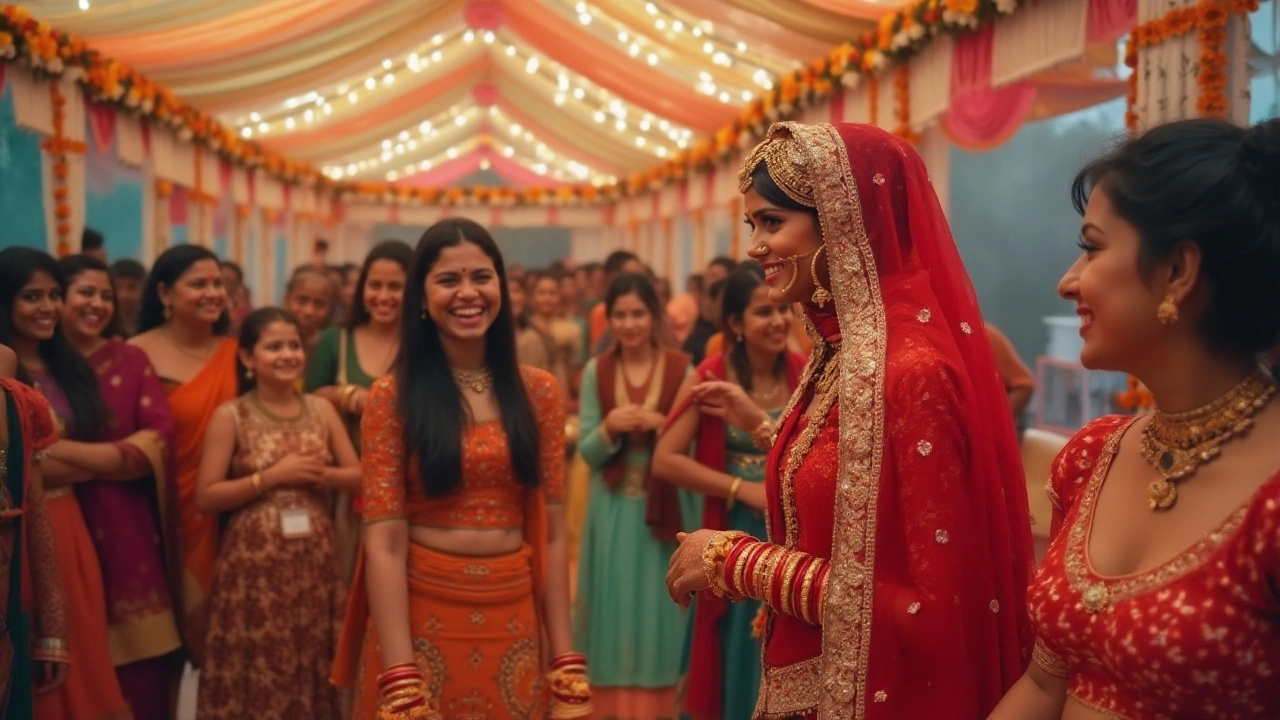
Modern Perspectives on the Choora Tradition
Times are changing, and with them, many age-old customs are being reevaluated, adapted, or sometimes, lovingly let go. The colorful practice of wearing choora bangles is no exception. While the traditional choora carries immense cultural significance, the way it is being perceived and embraced by the new generation is both intriguing and reflective of broader changes in societal norms. Many young brides today are looking for ways to blend tradition with modernity, thereby giving the choora a contemporary twist. From customizing the bangle designs to match their personal style or opting for a more subdued color palette to fit into everyday life post-ceremony, there's an ongoing effort to keep the tradition alive while ensuring it feels personal and relevant.
Interestingly, the duration for which the choora is worn is also seeing modifications. While tradition required it to be worn for months, modern schedules and lifestyles mean some brides choose to wear it for a shorter period.
"Culture is what we make of it," says Neha Bhasin, a young fashion designer from Delhi, known for integrating traditional motifs with modern attire. "There’s no correct time anymore to remove the choora. What's important is the meaning behind it and how each bride connects with it personally."This attitude reflects a broader trend among Indian youth who appreciate their heritage but also want it to align with their reality today.
Another fascinating development is how this tradition is being celebrated in diverse parts of the world. With the Indian diaspora spread globally, choora ceremonies are being adapted to fit into different cultural backdrops. Whether it's being worn with Western bridal gowns during lavish weddings in the United States or with elegant sarees in small and intimate ceremonies in Europe, the choora is transcending boundaries. This international flair not only showcases the adaptability of the tradition but also its universal appeal.
Also noteworthy is the burgeoning popularity of choora as a fashion statement beyond its traditional roots. Celebrities and social media influencers from Bollywood and beyond often sport these vibrant bangles, giving them a status boost, particularly among younger audiences. The choora's presence in pop culture helps retain its relevance and introduce it to audiences who may not be familiar with its historical significance. With such a diverse implementation, it's no wonder the choora remains a cherished part of the wedding ritual even when its traditional aspects are being reshaped.
The evolution of the choora tradition is a testament to its resilience and flexibility. As young Indian brides continue to redefine what traditions mean to them personally, this ritual is likely to evolve yet remain an indelible part of Indian weddings. As we observe this transformation, it’s important to hold on to the essence and significance of why these Indian traditions exist while allowing room for growth and individual expression.
